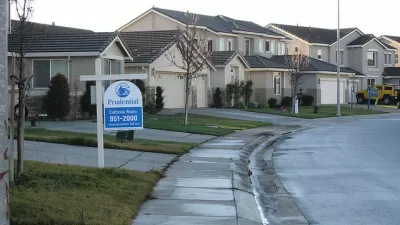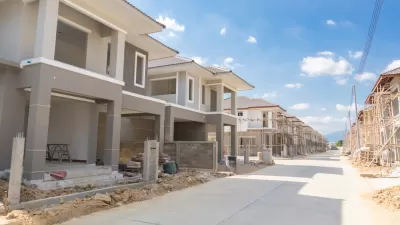Recent analysis by Trulia found that the current housing market shows trends that follow along conservative and liberal lines—specifically, that the country's "blue" states are much more expensive than the "red" states.
"The housing crisis hurt Democratic- and Republican-leaning markets similarly, but today blue markets have lower affordability, lower homeownership, and greater income inequality," according to an article by Jed Kolko.
The article begins by examining the effects of the Great Recession on the housing markets of states, defining their politics as red or blue depending on how they voted in the 2012 presidential election. Kolko reports that the recession impacted red and blue states as follows: "The peak-to-trough price decline averaged 16% in red markets, 26% in light-blue markets, and 25% in dark-blue markets. But the relationship between price declines and redness or blueness was not statistically significant."
After showing that the recovery has lacked bias toward red or blue states, Kolko goes on to located disparities between red and blue states—namely with regard to affordability. "Looking across all 100 largest metros, the correlation between price-per-square-foot and 2012 vote margin was positive, high (0.63), and statistically significant. In fact, the only expensive red market was Orange County, CA, at $363 per square foot. There was a huge drop-off to the next-most-expensive red market—North Port-Bradenton-Sarasota, FL, at $150 per square foot."
FULL STORY: Blue Markets Face Bigger Housing Challenges Than Red Markets

Planetizen Federal Action Tracker
A weekly monitor of how Trump’s orders and actions are impacting planners and planning in America.

San Francisco's School District Spent $105M To Build Affordable Housing for Teachers — And That's Just the Beginning
SFUSD joins a growing list of school districts using their land holdings to address housing affordability challenges faced by their own employees.

The Tiny, Adorable $7,000 Car Turning Japan Onto EVs
The single seat Mibot charges from a regular plug as quickly as an iPad, and is about half the price of an average EV.

Seattle's Plan for Adopting Driverless Cars
Equity, safety, accessibility and affordability are front of mind as the city prepares for robotaxis and other autonomous vehicles.

As Trump Phases Out FEMA, Is It Time to Flee the Floodplains?
With less federal funding available for disaster relief efforts, the need to relocate at-risk communities is more urgent than ever.

With Protected Lanes, 460% More People Commute by Bike
For those needing more ammo, more data proving what we already knew is here.
Urban Design for Planners 1: Software Tools
This six-course series explores essential urban design concepts using open source software and equips planners with the tools they need to participate fully in the urban design process.
Planning for Universal Design
Learn the tools for implementing Universal Design in planning regulations.
Smith Gee Studio
City of Charlotte
City of Camden Redevelopment Agency
City of Astoria
Transportation Research & Education Center (TREC) at Portland State University
US High Speed Rail Association
City of Camden Redevelopment Agency
Municipality of Princeton (NJ)





























